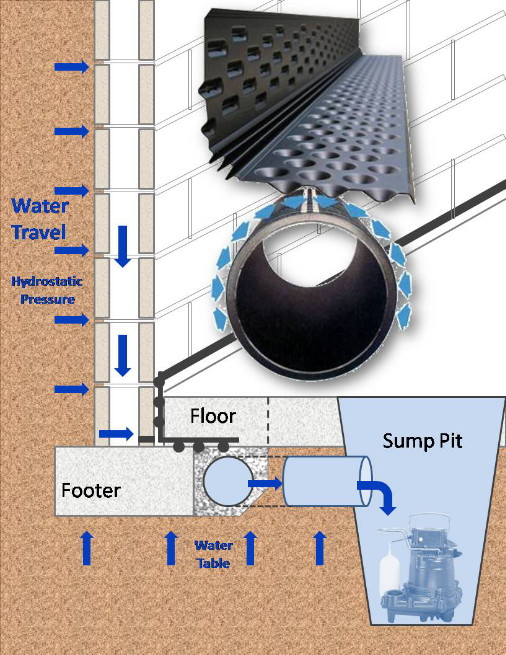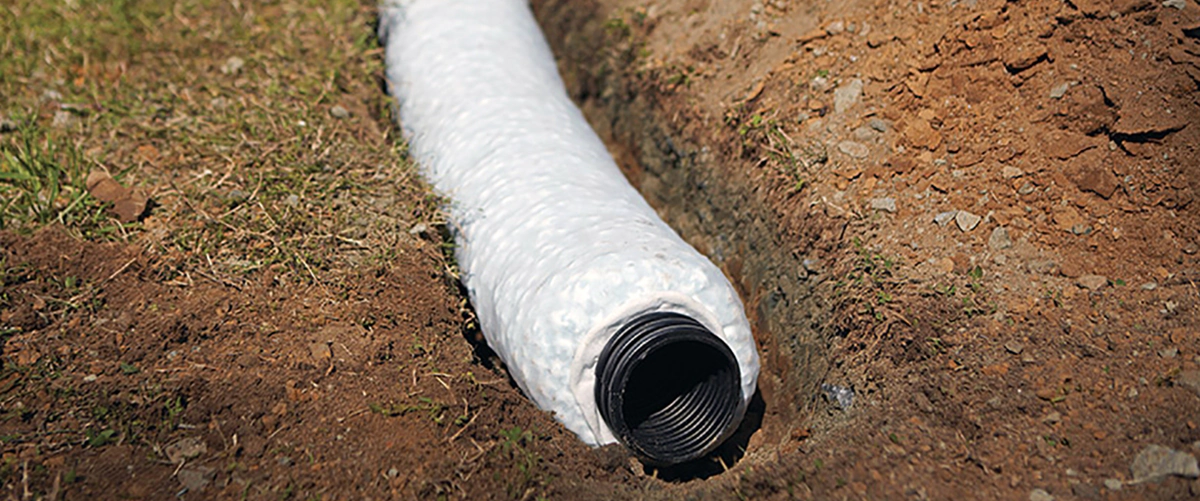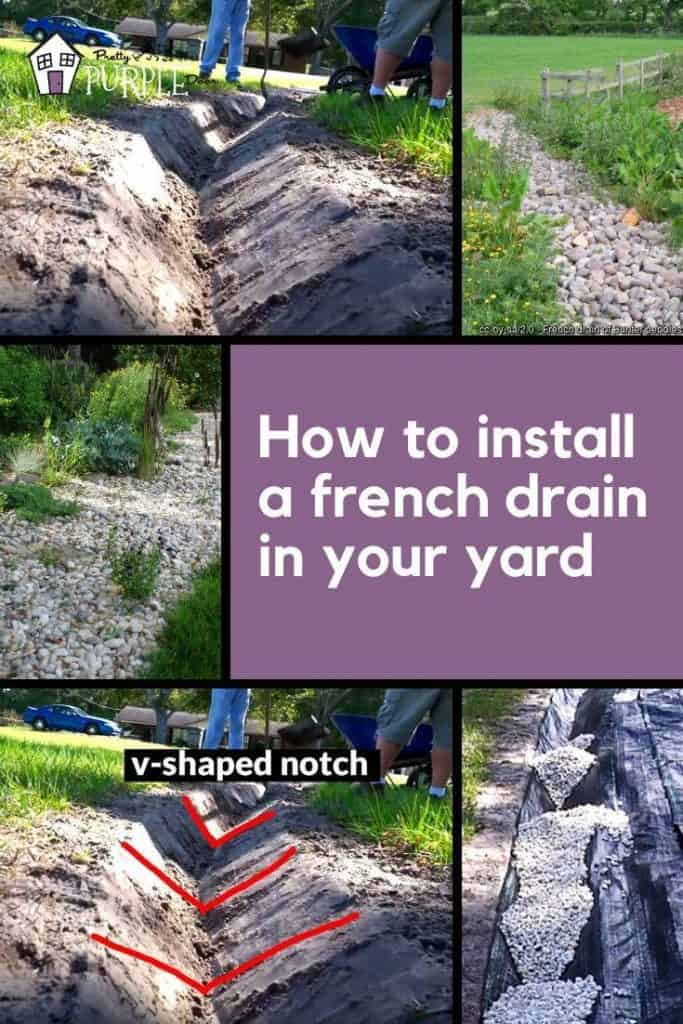Recognizing the Conveniences and Installment Process of a French Drain for Homeowners
If you're managing water merging around your home, a French drain might be the remedy you require. It reroutes excess moisture far from your foundation, aiding to avoid pricey damages and mold concerns. However before you delve into installment, it is essential to recognize the benefits and the steps included. Allow's check out just how to analyze your building and what tools you'll require to get going.
What Is a French Drainpipe?
A French drainpipe is an efficient option for handling excess water in your lawn. It's a trench loaded with gravel or rock which contains a perforated pipeline at its bottom. This style permits water to flow right into the pipeline rather than merging around your home, stopping flooding and erosion. When you observe water accumulating in particular locations, a French drain can redirect that dampness far from your foundation and other crucial areas.Installing one involves digging a trench that slopes far from your home, making certain effective water drainage. You'll need to line the trench with landscape fabric to stop dirt from blocking the gravel. When you've placed the pipeline and covered it with gravel, the system will successfully transport water away. This easy yet effective water drainage option can help secure your residential or commercial property from water damages and maintain the honesty of your landscape.

Trick Advantages of Setting Up a French Drain
Installing a French drainpipe can substantially boost your building's water drainage system, specifically if you usually manage water merging in your lawn. One of the key benefits is that it properly reroutes excess water far from your home's foundation, decreasing the risk of water damages and mold and mildew growth. This can save you from pricey fixings down the line.Additionally, a French drain can improve your lawn's overall visual appeals by preventing sloppy areas and undesirable puddles. With better drain, you can enjoy an extra functional exterior room for activities and gardening.Moreover, these drains pipes can enhance your residential property's value. Prospective customers appreciate a well-drained backyard, as it indicates much less upkeep and fewer concerns. Finally, French drains pipes require marginal maintenance-- simply occasional cleansing to guarantee they work effectively. By investing in a French drain, you're making a clever choice for both your home and your satisfaction.
Analyzing Your Residential Property for Water Drainage Issues
Before you can successfully resolve drainage problems, it's vital to analyze your residential or commercial property completely. Begin by strolling around your backyard after a hefty rainfall to recognize problem areas. Search for standing water, soggy spots, or disintegration, as these indications indicate inadequate water drainage. Focus on how water flows on your home; observe if it accumulates near your structure or in low-lying areas.Next, examine your downspouts and seamless gutters. Validate they straight water far from your home and that they're devoid of debris. Examine your landscaping, as certain plants can add to drainage troubles by absorbing too much water or developing barriers.Finally, consider the slope of your yard. Ideally, your land ought to slope far from your structure. If you notice any type of issues, remember; this will aid you determine the most effective water drainage services, like setting up a French drainpipe, later.

Devices and Products Needed for Installment
As soon as you have actually recognized the water drainage concerns on your residential or commercial property, gathering the right tools and materials for a French drain installation ends up being the next step. You'll require a shovel or trenching tool to dig the trench for your drain. A degree will certainly assist guarantee the trench inclines appropriately, advertising appropriate water flow.For materials, acquisition perforated PVC pipeline to enable water to enter while shutting out dirt. You'll additionally need gravel to surround the pipeline, helping drain and avoiding clogging. Landscape design material is vital to keep dust out of the gravel and pipe.Don' t neglect safety and security gear like gloves and safety glasses for defense while you work. If you plan to attach your French drain to a sump pump, guarantee you have the essential installations and a pump accessible. With these devices and materials, you'll be all set to tackle your French drain installment successfully.
Step-by-Step Installation Refine
Currently that you've collected your materials and tools, it's time to get going on mounting your French drain (Portland French Drain). You'll require to focus on trenching and proper drainpipe placement to assure efficient water management. Backfilling and completing the last actions will wrap up your job nicely.
Required Devices and Materials
To successfully install a French drainpipe, you'll need a couple of necessary tools and materials available. Beginning with a shovel or a trenching device to dig your trench. A degree's essential for making sure correct slope, while a tape procedure aids you gauge distances properly. You'll additionally require perforated pipeline, which is the heart of the system, and gravel or rock for drain. A landscape textile will avoid dirt from obstructing the drain. Don't forget a wheelbarrow for moving materials and safety equipment like handwear covers and safety glasses. A pickaxe can be handy for breaking up difficult soil. Gather these items before you begin, and you'll be set for a smooth installment procedure.
Trenching and Drain Pipes Positioning
As you prepare to install your French drain, the initial step involves thoroughly digging the trench where the drainpipe will be positioned. Start by noting the preferred path with spray paint or string, ensuring it has a slope of a minimum of 1% for appropriate drain. Utilizing a shovel or trenching tool, dig a trench about 6 inches wide and 18 to 24 inches deep. Remove any rocks, origins, or particles as you go. When the trench prepares, line it with landscaping fabric to stop soil from obstructing the drainpipe. Next off, put a layer of gravel at the bottom for drainage support. Place the perforated drain pipeline in the trench with the holes facing down, guaranteeing it's aligned with the incline for perfect water circulation.
Backfilling and Final Actions
It's time to backfill the trench as soon as you've placed the perforated drain pipeline and covered it with crushed rock. Begin by including a layer of dirt on Click Here top of the gravel, making certain to avoid large globs or rocks. Rake or make use of a shovel to evenly disperse the dirt, loading the trench to the surface degree. It's necessary to portable the soil gently as you go to stop future settling. After backfilling, ravel the surface, blending it perfectly with the bordering area. Consider adding topsoil for much better development if you're planning to plant turf or various other plant life. Finally, check for any kind of water drainage issues, and clean up your job location, ensuring everything looks neat and practical.

Upkeep Tips for Your French Drainpipe
While keeping your French drainpipe may appear challenging, it's important for protecting against water buildup and guaranteeing effective drainage. First, frequently inspect the drainpipe's electrical outlet for particles like fallen leaves, dust, or various other blockages. If you observe an obstruction, clear it out quickly to prevent backups (Portland French Drain).Next, evaluate the gravel bordering the drain. If you see a significant amount of debris build-up, take into consideration cleansing or changing the gravel to maintain peak performance.Additionally, monitor the location around your French drainpipe for indicators of disintegration or settling. If you identify any type of problems, do something about it to repair them, as they can impact water drainage efficiency.Lastly, consider testing the drainpipe's efficiency after heavy rains. If water swimming pools nearby, have a peek here it may be time to reassess your system. By following these maintenance pointers, you'll ensure your French drain remains to work effectively and secures your home from water damage
When to Call a Professional for Aid
You need to take into consideration calling an expert if you discover indicators of drainpipe problems, like persistent standing water or overruning rain gutters. Complex installation needs can likewise signal that it's time to obtain experienced help, specifically if you're not sure regarding local safety laws. Do not hesitate to get to out for support to guarantee your French drainpipe functions effectively and satisfies code.
Signs of Drainpipe Issues
When drain concerns arise, identifying the indications early can save you from costly repair services down the line. Search for water merging in your lawn or around your structure; this could suggest a clog. If you discover relentless dampness in your cellar, it's a sure indicator that drainage isn't working properly. Keep an eye out for foul smells, which can stem from stationary water or decaying debris in the drainpipe. You might hear uncommon gurgling sounds from your pipes, indicating an obstruction in the system. If you detect erosion or sinking dirt, it's time to act. Do not wait to call an expert to evaluate the scenario and avoid further damages to your residential property.
Complicated Installment Requirements
Comprehending the complex setup demands is necessary for assuring its performance if you're taking into consideration mounting a French drainpipe. French drains pipes commonly include excavation, sloping, and appropriate drain materials, which can be overwhelming. If your yard has challenging surface or you're unclear regarding regional soil conditions, it's important to call a specialist. They can examine your property and establish the most effective method. Additionally, if you lack the necessary devices or experience, employing an expert can conserve you time and tension. A professional can additionally ensure the drain is mounted to click work correctly and last for several years. Eventually, purchasing specialist help can prevent pricey errors and ensure your French drainpipe operates effectively.
Safety and Regulations Conformity
While intending your French drain installment, it's vital to prioritize safety and stick to local policies. Before you start digging, check if you require a license or if there specify codes in your location. This assures you're not violating any legislations that could result in fines or job delays.If you're not sure concerning underground energies, call an expert to locate them. It's critical to avoid destructive gas, water, or electric lines. Additionally, if the setup requires hefty equipment or complex grading, employing a specialist can conserve you effort and time. Remember, security comes first-- do not hesitate to look for aid if you really feel uncertain or overwhelmed about the procedure. Doing so secures your residential property and ensures a successful drainage option.
Often Asked Inquiries
Can a French Drain Assistance With Basement Flooding Issues?
Yes, a French drainpipe can efficiently redirect water away from your cellar, lowering flooding problems. By installing one, you'll manage excess water much better and protect your home from possible water damages and mold growth.
How much time Does a French Drain Normally Last?
A French drain usually lasts around 30 to 40 years, depending upon the materials utilized and upkeep - Portland French Drain. Normal inspections and correct treatment can assist extend its life-span, guaranteeing effective water drainage for your building
Exist Alternatives to a French Drain?
Yes, there are choices to a French drain. You might take into consideration surface area drains, dry wells, or grading your backyard to redirect water. Each choice has various performance, so assess your details drain requires before choosing.
Will a French Drain Influence My Building's Landscape?
A French drainpipe can change your building's landscape by redirecting water circulation and potentially changing soil wetness levels. With mindful preparation, you can maintain appearances while boosting drain and avoiding water damage.
Can I Set Up a French Drain in Wintertime?
Yes, you can mount a French drainpipe in wintertime, yet you'll require to take right into account frozen ground problems. Make sure you've the right tools and materials to take care of any kind of challenges presented by the chilly weather condition. When you notice water accumulating in specific areas, a French drainpipe can redirect that wetness away from your structure and various other important areas.Installing one includes excavating a trench that slopes away from your home, guaranteeing reliable water drainage. Setting up a French drain can considerably improve your residential or commercial property's drain system, particularly if you usually deal with water pooling in your backyard. As you prepare to install your French drainpipe, the initial step involves thoroughly digging the trench where the drainpipe will be put. While preserving your French drain might seem challenging, it's critical for protecting against water build-up and guaranteeing effective water drainage. A French drain can change your home's landscape by redirecting water flow and possibly transforming dirt moisture levels.